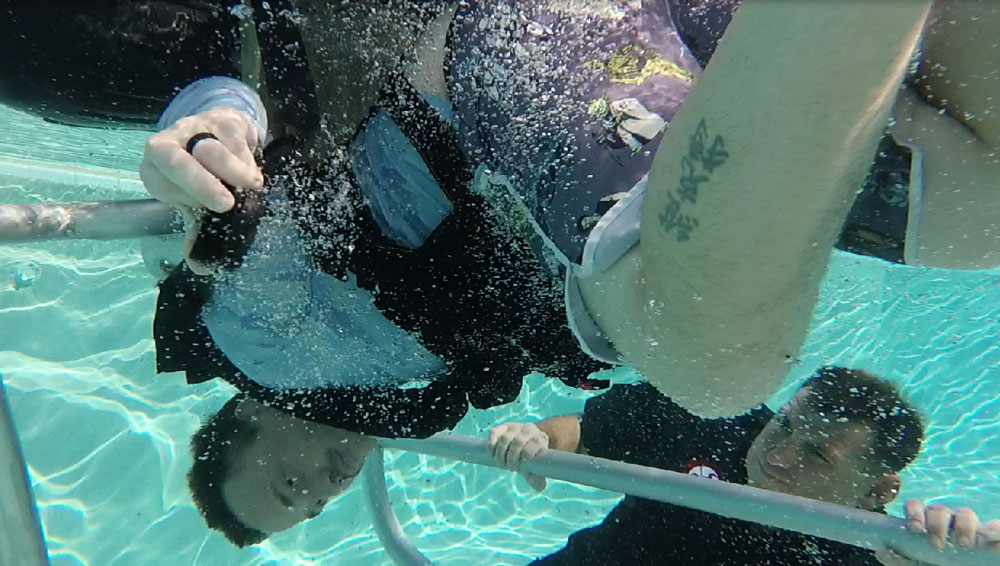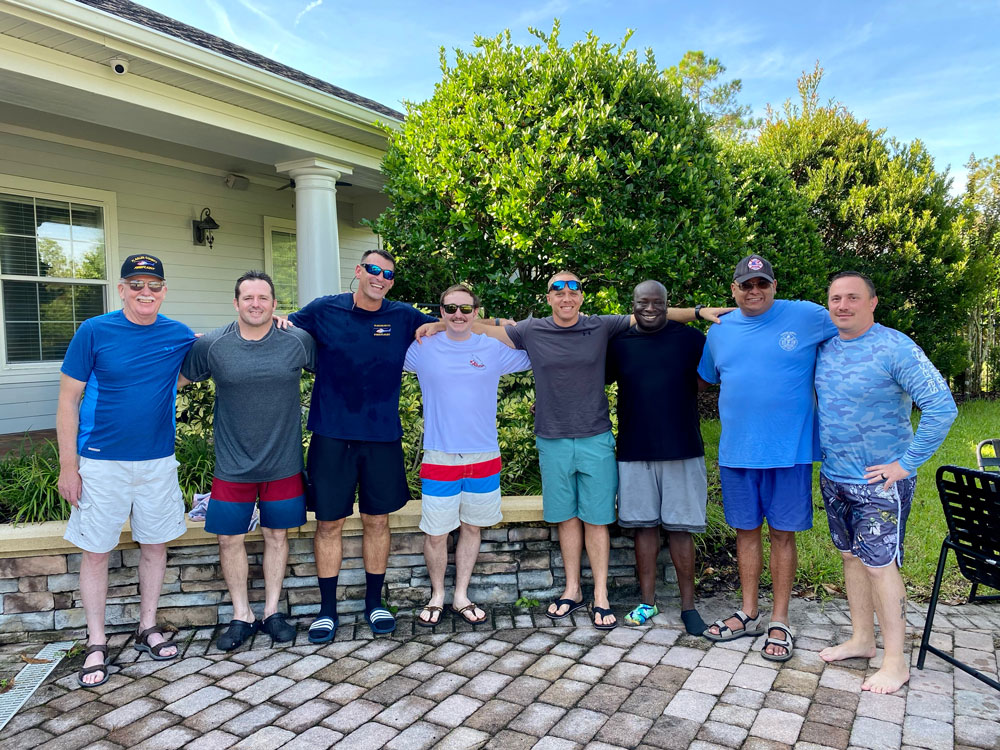
All seven Flagler County Fire Rescue FireFlight medics trained September 18 to complete their Shallow Water Egress Training (SWET) to ensure they can escape from the helicopter’s cockpit should an accident leave it and its crew upside down in the water.
“You become so disoriented,” said Flight Operations Chief Dana Morris, who provided instruction at the Integra Woods swimming pool with Flight Medic Andy Thomas. “It is critical to have your reference point.”
Morris in 2018 worked with other county departments to build a training cage, also known as a dunker, to allow him, fellow FireFlight pilot Todd Whaley, and the medics to train annually to meet FAA standards without having to pay a premium to train with an outside agency.
Top-heavy helicopters inherently rollover and their blades to snap off upon hitting the water, which makes the training critical as it simulates what the crew – strapped in with breathing apparatuses for every flight – must do to safely escape within seconds. Developing muscle memory is the goal.
Thomas, a trainer, told his fellow medics what to expect.
“While strapped in the aircraft, the pilot will say, ‘Brace. Brace. Brace,’” Thomas said. “It’s important to have a reference point. Use your left hand (critical for medics on FireFlight as their exit is to the left) to grab the seat cushion, and never let it leave that spot until you are clear about where the exterior of the aircraft is.”
Once the helicopter rolls over and submerges into the water, the radio communication cord must be disconnected from the helmet, the seatbelt released, and then the occupant can exit and swim to safety. The training also emphasized clearing debris on the water’s surface with an arm before coming to the top.
The crews are also trained on how to use the HEEDS (Helicopter Emergency Egress Device) – a miniature SCUBA tank – that gives them several breaths of air in case of an extended escape. HEEDS are carried in each crew member’s life vest.
The medics who were not practicing the underwater escape techniques remained in the pool to assist if necessary – one serving as the keeper of the backup oxygen tank.
“This training is very important, and it could very well save the life of the crew,” Morris said. “Of course we hope we’ll never have to use it, but we do fly over the ocean and the Intracoastal. It will enable the crew to safely get out of the aircraft if we were to end up in the water.”
Flagler County’s FireFlight Medic Team:
- Thomas Cope
- David Dufek
- Frank Mesta
- Prince Mack
- Kyle Najpaver
- Andy Thomas
- Sean Walker
![]()






























Roy Longo says
Great job! Miss you boys!